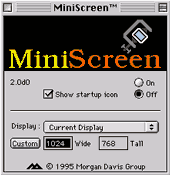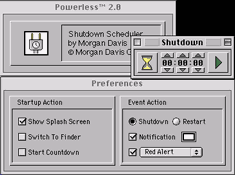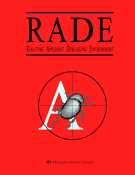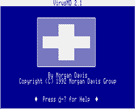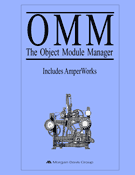The Vendor Client Relationship
Hilariously brilliant video that precisely nails real issues designers and developers face with clients all the time. If this makes no sense to you, you’re not one of us.
School Not Required
A designer friend requested inspiration for creating posters that convince high-school kids to take math and science classes. Here were my ideas…
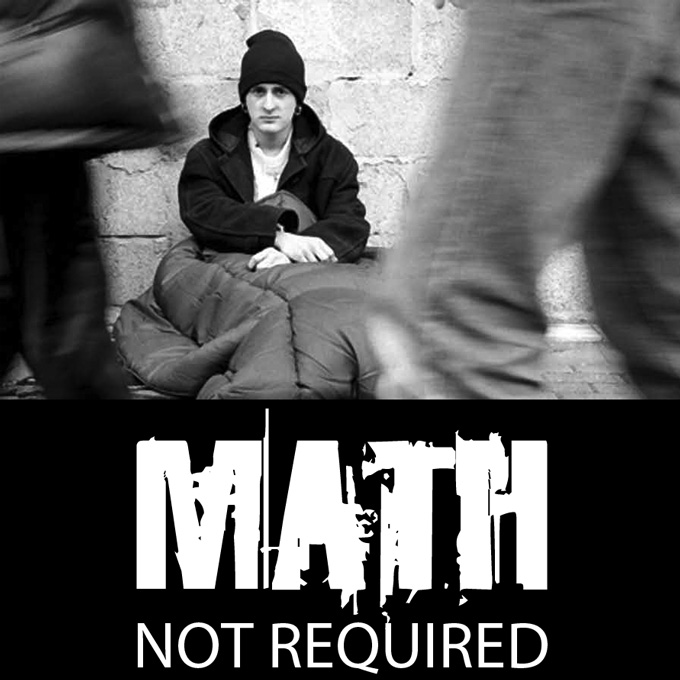

Reblog 2.0
I started this personal web site long before the advent of true blogging software. I finally spent a weekend converting it all into WordPress. Now maybe I’ll have one less excuse for neglecting it.
NB: There are some funky linkages between the new blog articles and old content references. I’ll be ironing these out as I tweak and polish. Apologies in advance if something breaks on you.
Computer Cartoons by Bob Stevens
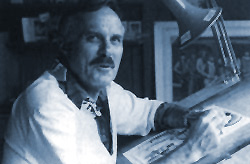
Bob Stevens, Cartoonist
If it were possible to make CompuSoft books more fun, they would include cartoons by Bob Stevens. And that’s just what we did. Below are only a few single-panel illustrations readers enjoyed about every five pages. Stevens’ caricatures depicted him as the bumbling BASIC programmer, with occasional supporting characters resembling our dear Dr. Lien.
Chuck Yeager, a 25-year fan of Stevens’ work in Air Force Magazine, said, “Any guy who can make something humorous out of a gear-up landing has my vote as a first class cartoonist.”
I met Bob Stevens in my first year at CompuSoft. He died in 1994 at the age of 71 after battling cancer.
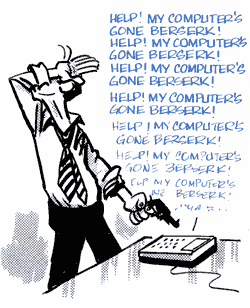 |
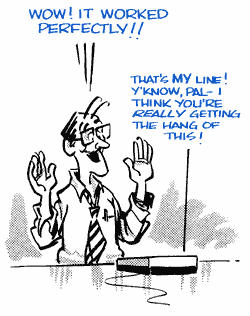 |
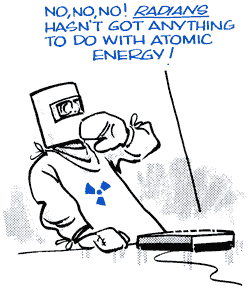 |
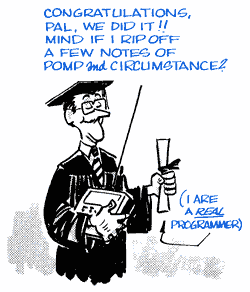 |
A Good Walk Spoiled

"Golf is a good walk spoiled." — Mark Twain
MiniScreen
MiniScreen reduces the Mac desktop area to that of a smaller Mac. For example, a 15″ display could be demoted to a nine-incher like on the Mac Plus. I developed MiniScreen for testing applications within the display environment of common Macs. It was great for making sure menu bars and dialog boxes would fit.
The price was $39.95. Among many notable customers, I sold many copies to Microsoft and Apple over the years.
I was working on an application version of MiniScreen before I turned my attention to bigger projects… starting an ISP.
![]() MiniScreen-2.0.sea 27K self-extracting archive
MiniScreen-2.0.sea 27K self-extracting archive
Powerless
The Mac II was one of the first computers to support software-based power-off capability. I wrote Powerless ($19.95) to turn off my Mac at a set time or after a duration. This let me start a time-consuming task (compilation, disk defragmentation, download, etc.) and then have my system shutdown cleanly later.
A new version was being developed when CTSnet came along and stole all my free time. The updated version was an event dispatcher that could shutdown or restart the computer, run an application, play a sound, issue an alert, etc., depending on certain triggers. Triggers included alarm time, countdown timers, idle keyboard or modem activity, etc.
![]() Powerless-2.0.sea 42K self-extracting archive
Powerless-2.0.sea 42K self-extracting archive
RADE
RADE is the Real-time Applesoft Debugging Environment, allowing you to explore the guts of a BASIC program, its variables, program flow, and other runtime characteristics without disturbing the program’s memory or screen display. Without RADE, debugging Applesoft BASIC was intensely frustrating and time consuming. With RADE and its powerful features, like stepping, tracing, and breakpoints, debugging is quick and painless. A relatively proficient programmer, I had to pull out the RADE and exterminate several elusive bugs more than once. The stuff really worked, and it worked well and earned great reviews.
InCider/A+ magazine wrote, “RADE is fast, powerful, full-featured, and easy to use. It’s a breath of fresh air . . . a throwback to the days of tight, efficient programming.”
RADE was a collaborative effort with Russell Gibson. Russ and I conceived and developed RADE during the summer of 1992 with Russ doing the programming, and I did the rest. We split the gross revenue fifty-fifty. Daily electronic mail (via the ProLine network, of course) kept the project rolling. Russ and I met for the first time, face to face, only after RADE and the manual were completed.
RADE was the last Apple II product MDG introduced.
![]() RADE-1.0.img 800K ProDOS disk
RADE-1.0.img 800K ProDOS disk
![]() RADE-1.0.pdf 450K Acrobat file, 48 pages
RADE-1.0.pdf 450K Acrobat file, 48 pages
VirusMD
VirusMD scans an Apple II drive reporting files infected with Apple II viruses, and also offers to fix them. VirusMD repairs damage to volume directories that the viruses cause, and can update your boot blocks if they’re found to be “impure”. This utility sold for $19.95 and included Apple IIGS and 8-bit versions on the disk.
The program landed me an opportunity in 1989 to write an article for A+ Magazine about viruses. After publication, one reader commented in comp.sys.apple2, “As a professional in the computer security game I’d like to publicly complement Morgan Davis on his article in the recent A+ on viruses. It is both well-written and technically accurate.” That was nice to see, as I did not consider myself an expert on computer viruses at the time.
![]() VirusMD-2.1.img 800K ProDOS disk
VirusMD-2.1.img 800K ProDOS disk
Object Module Manager
OMM reminds one of a meditation chant. And in a way, the Object Module Manager (OMM) was a kind of nirvana for me. At the time, object oriented programming (OOP) was the big deal. After wedging a few chunks of machine code into the 48K space along with the operating system, your BASIC code, and its variables, memory management became a nightmare. The OMM created harmony among the growing number of machine language programs needed for fast, efficient 8-bit Apple II applications.
The OMM was the first mechanism to dynamically relocate active code blocks and associated data inside of memory. It allowed you to shuffle code modules on the fly to make the most efficient use of memory. The interface to BASIC applications, which typically would make a CALL to a fixed memory address, was arbitrated by the OMM. So BASIC programs didn’t need to worry about at which address a needed function resided.
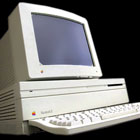
At this point, I created most of my Apple II software on a Mac IIx using cross-platform development tools. It cost $5,000 new, but saved tons of time.
Taking a cue from the OOP hysteria, the OMM supported the concept of message passing. This was required for the OMM to perform dynamic relocation, as modules may want to know when they moved around, especially those employing interrupt handlers. And so a set of messages was developed for such housekeeping chores, including user-defined messages so that developers could create intercommunicating modules.
OMM sold for $39.95. It included an extremely handy module called AmperWorks that added scores of fast and helpful functions to BASIC. Easily the least glamorous of all the “back end” tools that ProLine relied on, the OMM marked a critical evolutionary step. Without it, none of it could have worked.
![]() OMM-1.4.img 800K ProDOS disk
OMM-1.4.img 800K ProDOS disk
![]() OMM-1.4.pdf 317K Acrobat file, 68 pages
OMM-1.4.pdf 317K Acrobat file, 68 pages

